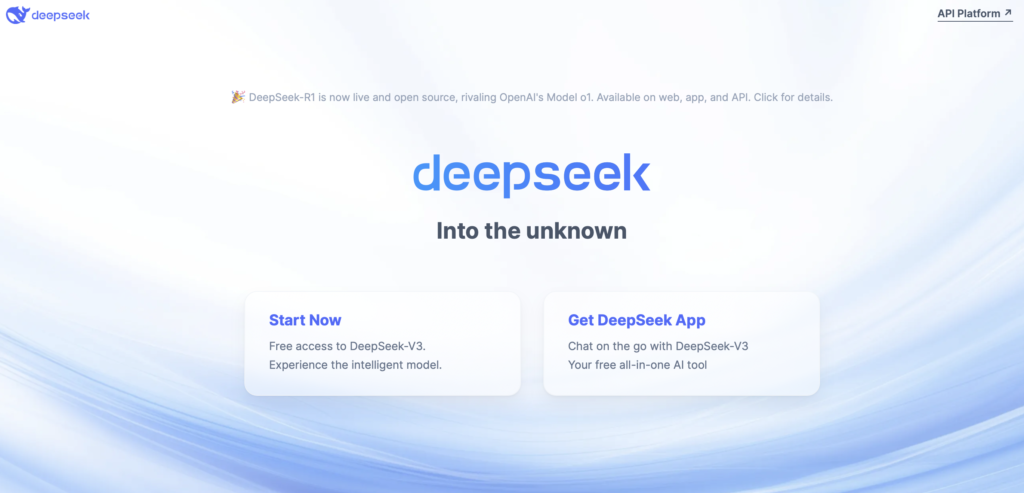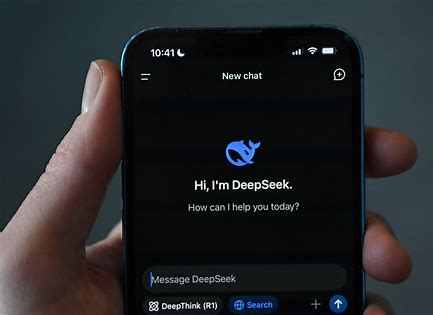Why Nvidia Loses $589 Billion in ONE Day?
In an unprecedented move, DeepSeek, a Chinese AI startup, rocked the tech world on January 27, 2025, with the release of its R1 AI model. The impact was seismic—Nvidia, a leader in AI hardware, lost a staggering $589 billion in market value in just one day. This event has sparked massive conversations about the future of AI, the growing importance of affordability, and the potential of open-source technology to disrupt industry giants.
In this blog, we’ll explore how DeepSeek’s R1 AI model has set a new standard for AI development, why this shift matters, and what it means for the future of the tech industry?
Table of Contents
1. The Rise of DeepSeek and the R1 AI Model
DeepSeek is a small startup, yet its R1 AI model has made a massive impact on the AI landscape. Developed for just $5.6 million, the R1 model is not only powerful but also a fraction of the cost of its competitors. This affordable price tag is a stark contrast to the traditional, expensive AI models that rely on costly hardware and licensing fees.

What makes DeepSeek’s R1 model stand out?
- Powerful Performance: The R1 model matches the capabilities of widely known AI systems like OpenAI’s ChatGPT.
- Affordability: With a development cost of just $5.6 million, DeepSeek has created an AI that is accessible to more developers, businesses, and individuals than ever before.
- Open Source: DeepSeek’s decision to release the model as open-source software means anyone can use, modify, and build upon it, creating a level playing field for innovation.
2. Nvidia’s $589 Billion Loss: A Wake-Up Call for the Tech Industry
On the day DeepSeek launched the R1 AI model, Nvidia—a leader in AI hardware, particularly in the GPU market—experienced a $589 billion loss in market value. This is the largest one-day loss in U.S. corporate history, sending shockwaves through the tech industry.
Why did this happen?
- Expensive Hardware Dependence: Nvidia has built its business around providing powerful but expensive GPUs, which are crucial for running AI models. DeepSeek’s R1 model, however, does not rely on expensive hardware, making it far more cost-effective and accessible.
- The Rise of Affordable AI: DeepSeek proved that AI can be both powerful and cheap, challenging the status quo where high-priced hardware and software were the norm.
3. The Future of AI: Accessibility and Open Source
DeepSeek’s success goes beyond just the release of an AI model—it signals a broader shift in the tech industry towards affordability and open-source technology. With the R1 model’s immediate success, including becoming the #1 free app on Apple’s App Store, millions have already embraced its potential.
What does this mean for the future of AI?
- Accessibility: DeepSeek’s move demonstrates that powerful AI can be available to anyone, not just tech giants with deep pockets. It opens the door for startups, developers, and organizations that previously couldn’t afford cutting-edge AI solutions.
- Open Source: The open-source nature of the R1 model could shape the future of AI development, allowing for greater collaboration, innovation, and evolution of AI technology. With DeepSeek’s decision, we may see more companies adopting open-source models to drive progress in AI.
4. The Impact on Nvidia and Other Hardware Giants
Nvidia isn’t the only company feeling the pressure. The success of DeepSeek’s R1 model and the resulting loss for Nvidia reveals a growing trend that could challenge hardware giants in the AI space.
- Disrupting the AI Hardware Market: If the future of AI doesn’t rely on expensive GPUs, companies like Nvidia will need to pivot quickly to stay relevant.
- Adapting to a Changing Market: Nvidia and other hardware giants may need to rethink their pricing structures, business models, and focus areas in response to the success of low-cost, open-source AI technology.
5. The Big Questions: What Does This Mean for the Tech Industry?
DeepSeek’s sudden rise and Nvidia’s dramatic loss bring up several critical questions for the future of technology:
- Can startups outperform tech giants? The success of DeepSeek shows that small, agile companies can challenge established industry players and disrupt markets with innovative, affordable solutions.
- Is Open Source the future of AI? With the growing demand for accessibility and the popularity of open-source models, we could see more tech companies adopting this approach, leading to a more collaborative and decentralized AI ecosystem.
- What does this mean for hardware providers? Nvidia and other hardware giants will need to adapt to a world where AI can run on cheaper infrastructure, or risk losing their dominance in the AI space.
Conclusion: A New Era for AI Innovation
DeepSeek’s R1 AI model isn’t just a technological breakthrough—it’s a symbol of the future of AI. By making powerful AI affordable and open-source, DeepSeek has set a new standard that could shape the industry for years to come. This shift towards affordable AI and open-source collaboration could mark the beginning of a new era where innovation is no longer confined to big tech players but is available to anyone with an idea.
As the tech world continues to adapt to this new reality, one thing is clear: The future of AI will be defined by accessibility, affordability, and collaboration.
What do you think? Is this the beginning of a revolution in the AI industry? Let us know your thoughts in the comments below!
